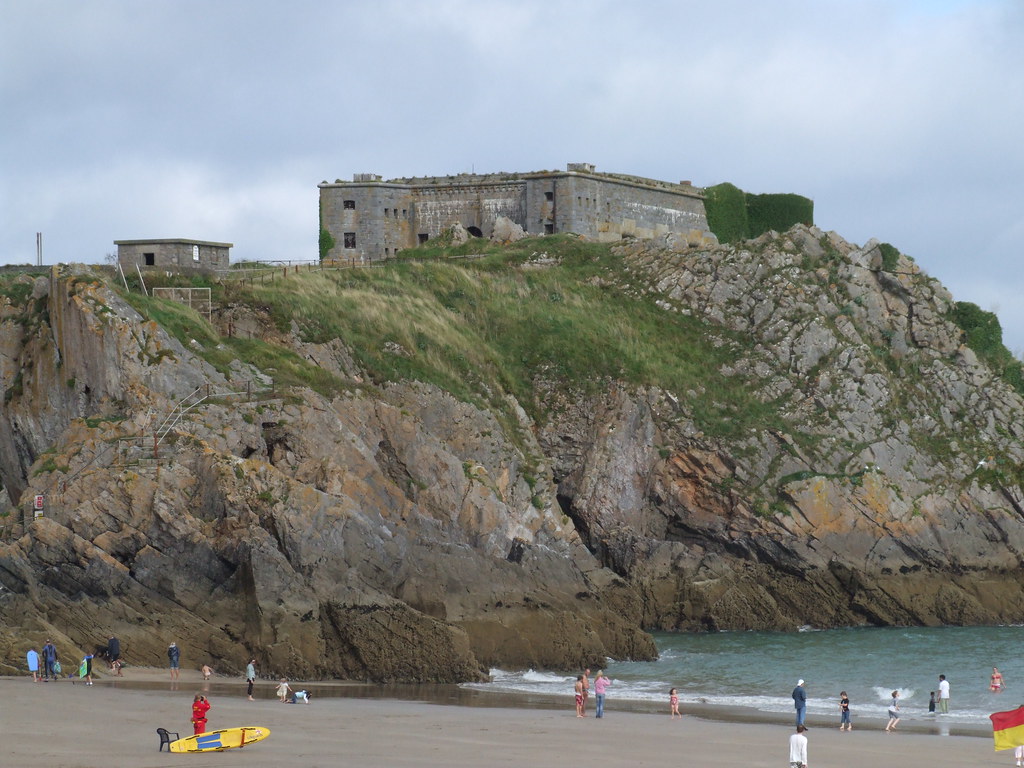St Govan’s ChapelLocation: Bosherston, near Pembroke
OS Reference: SR967929
Listed: Grade I
Scheduled Ancient Monument
Pembrokeshire Coast National Park
Although falling within the ancient parish of Bosherston the Chapel
is in the care of Pembrokeshire Coast National Park.
Access to the cliff-top path leading down to the chapel
is dependent upon the Firing Range being open to the public.
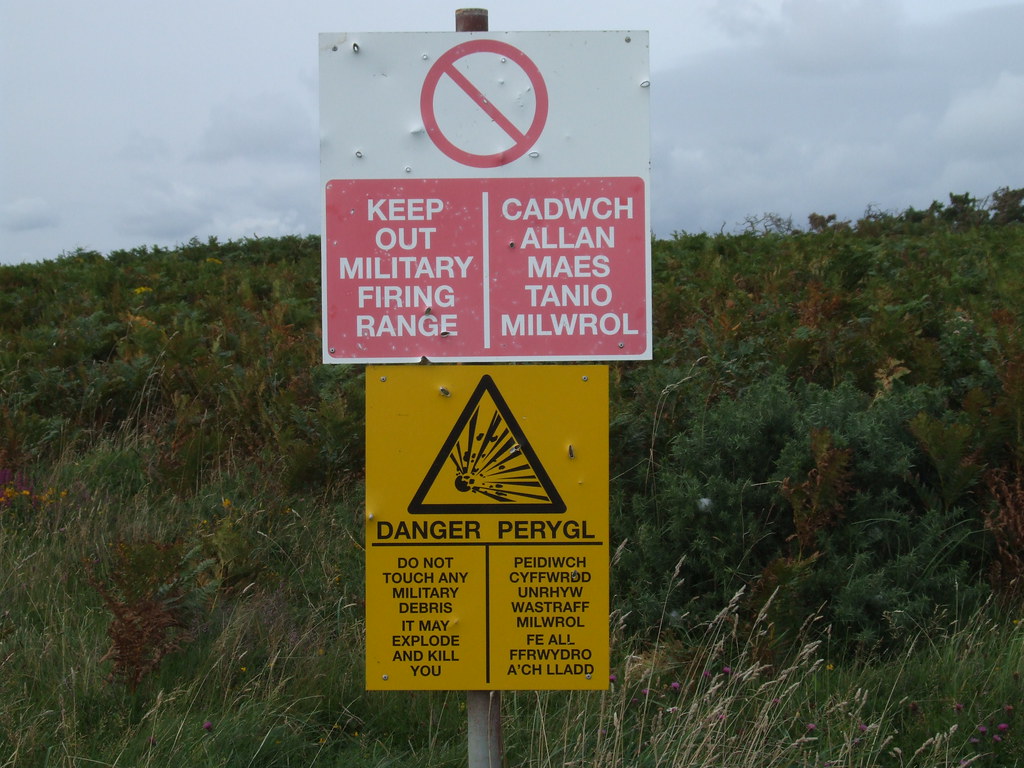
LOCAL NOTICES MUST BE OBSERVED.Right out on the cliffs of the spectacular Pembrokeshire National Park, five miles or so south of Pembroke, and a mile beyond the village of Bosherston, with its fine old 13th century church, and the famous lily ponds, there is one of the most picturesque little 6th century hermits' chapels in Britain. It is named after the hermit and saint who lived there so many centuries ago, St Govan.
Naturally, after such a long time, what we know of him is encrusted with legend, and it is now no longer possible to distinguish simple fact from pious embroidery, even if we wanted to. But here is what we know or what we are told about St Govan and his chapel.
St Govan, the man
St Govan was born of the Hy Cinnselach clan who lived in County Wexford in Ireland. His proper name was Gobhan or Gobban, which means a smith; of Gobanniuere, the old name for Abergavenny, meaning a smithy. Possibly St Govan's father was a worker in wood or metal.
As a boy St Govan was attracted by the preaching and teaching of St Ailbe, a native of Solva, Pembrokeshire, who founded the monastery of Dairinis, in Wexford, and Govan joined the monastery there. It is said that he worked as a cook for the community of the followers of St Ailbe.
St Ailbe desired to have a correct form of the Mass, and sent Lugich, Cailcean and Govan to Rome. Also, we are told that for a short time, probably after St Ailbe's death in 527, Govan was a disciple of St Senan at the monastery of Inniscathy. Then Govan returned to the monastery of Dairinis, where he was elected Abbot.
Why did he come to Pembrokeshire? He may have come to visit a Welsh Abbot. He may have come to seek descendents of his beloved teacher, who had come from Solva. He may have been preparing a geographical survey, tracing the coastline of Wales at that point which is nearest to Wexford. Or, like a modern tourist, he may have come to see the beautiful countryside now contained in the Pembrokeshire National Park! St Govan was already an elderly man when he came to Pembrokeshire, and tradition says that pirates from Lundy Island tried to capture him. This is interesting and feasible, for he would have been dressed as an Abbot. His capture therefore could have resulted in a large ransom being demanded from the monastery, the wealthy house of the day.
The tradition goes on to say that the cleft in the rock at St Govan's Chapel opened miraculously for Govan to hide in, closed over him, opening miraculously for a second time after the pirates had gone away.
If St Govan was chased he probably found the fissure a safe hiding place. As he saw the pirates leaving he was filled with a sense of shame at his cowardice,
and decided to remain so that in future hemight convert the pirates. Or possibly he was aware that the local people were much troubled by the marauding pirates and he decided to remain as a watchman, teacher and protector for them.
What we do know is that St Govan apparently stayed for the rest of his life in his cell, worshipping, preaching and teaching here in South Pembrokeshire. His saintliness was marked by the Church, which designated March 26th as St Govan's Day, and by followers who built the Chapel in the Cliffs. Tradition says that St Govan lies buried under the altar in the chapel which bears his name. He died in 586.
The Chapel
To enter this picturesque little building it is necessary to descend a long flight of steps, which, legend asserts, cannot be accurately counted by a mortal being.
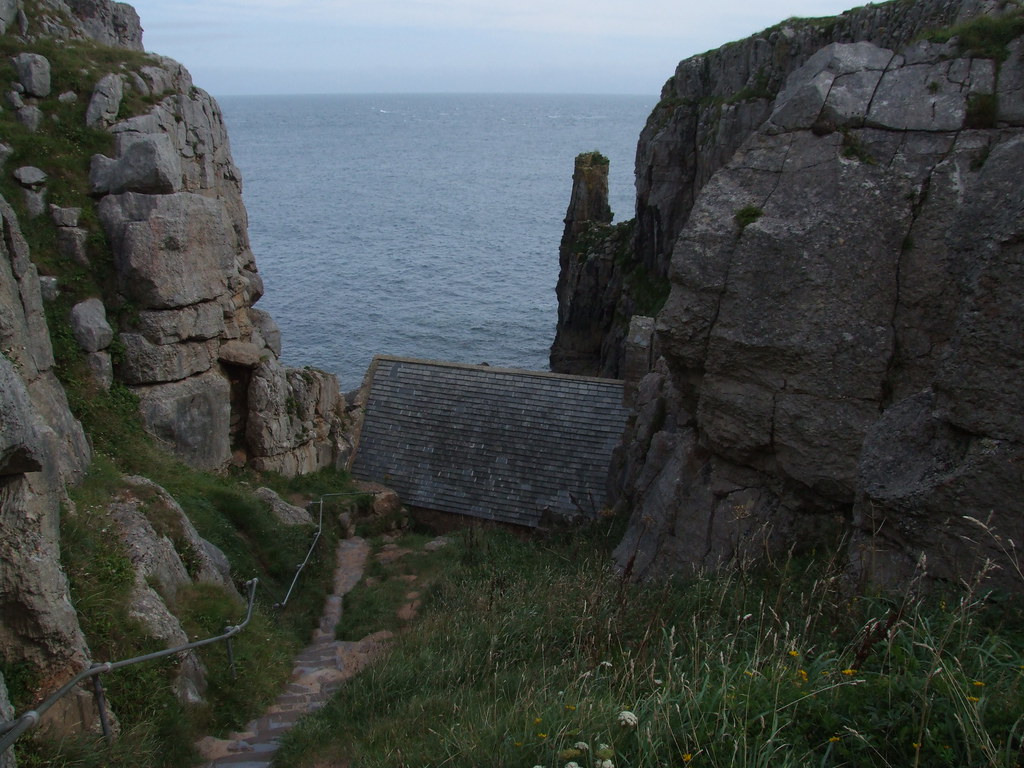
It is very strange that when a group of people are told to count the steps their answers always vary. It may have something to do with the fact that the steps are most irregular, with many half steps. Depending on where a person places his foot the count could vary considerably. The number of steps is approximately 74. The Chapel is simply constructed, having just a nave (main body) which measures approximately 5.3m by 3.8m.
At the east end is a stone altar, and steps leading to the small cell formed in the rock. The south wall contains a piscina, a small aperture and the main window. The north wall is plain, except for the entrance and a small recess or shelf. The west wall has a circle in the rough plastering high up and to the right of centre.
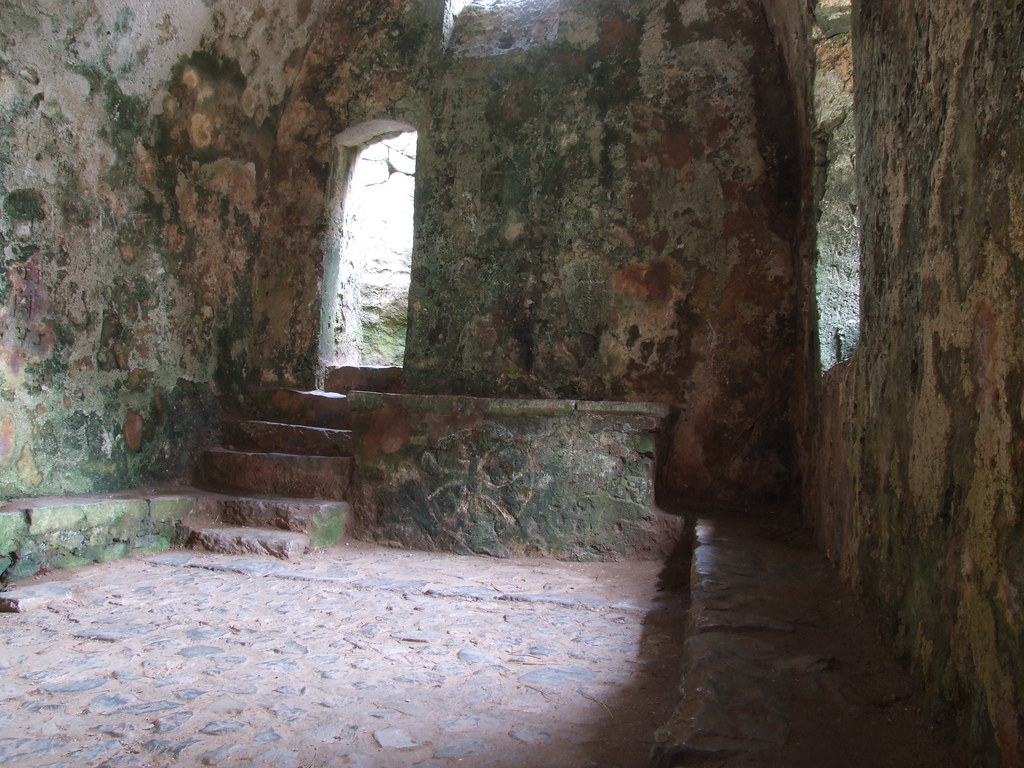
Within the circle there was an inscription, but all that is now visible are what look like a 6 and a O. Experts say that these are the only genuinely original marks on the walls. There are sadly a number of modern graffiti marks now. The west wall also has a small window and a doorway leading out to the rocks below and to a roughly built well. Experts agree that the building is at least as old as the 11th century and may well be as old as the 6th century
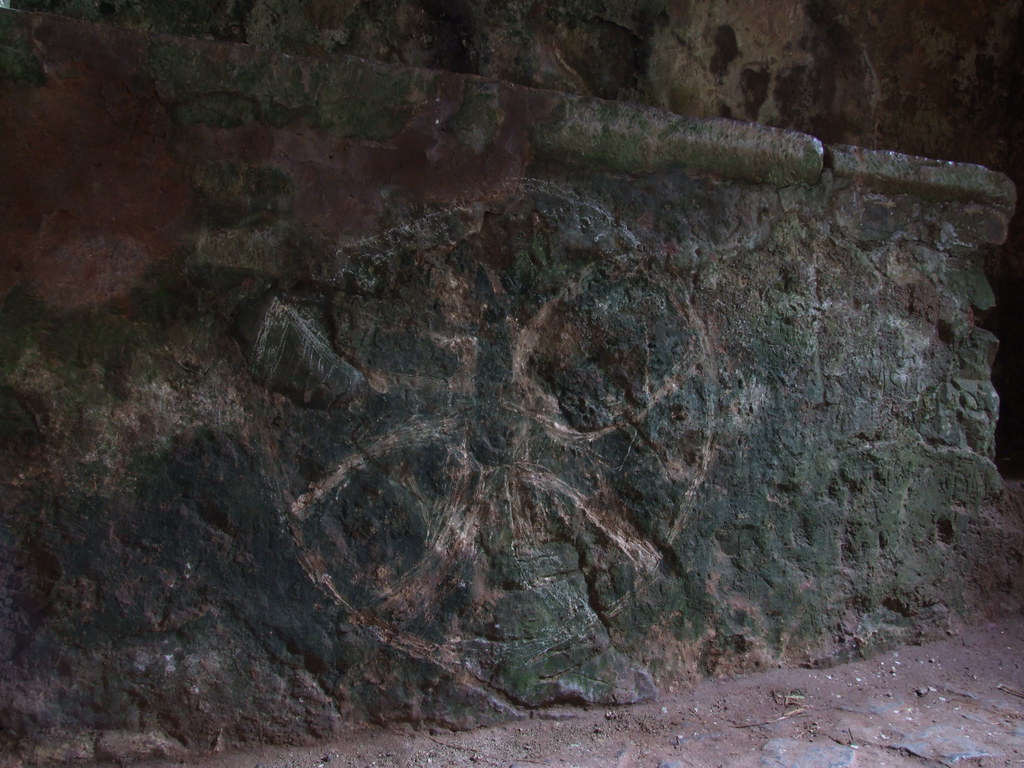
The Cell
Inside the cell there is a fissure in the rock, and the sides of the fissure show rib like characteristics. Legend says they are the imprints of St Govan's body as he lay hidden there. Another legend says that if a person makes a wish and enters the fissure, and is able to turn himself around, his wish will be granted.
The Bell Rock
Outside the Chapel there is a large rock boulder known as the Bell Rock. The legend is that St Govan was given a silver bell which was stolen by pirates from its bell tower. St Govan prayed for its return, and angels retrieved it and placed it inside a rock where it would be safe, and St Govan used to tap the rock which gave a note a thousand times stronger than the note of the original bell.
The Wishing and Healing Wells
In the floor near the main entrance there used to be a well, the water from which could only be procured in a limpet shell or small spoon, drop by drop. It was said to be a cure for eye complaints, skin diseases, and rheumatic tendencies.
The rough built well outside the Chapel (which is also dry now) has a double legend of being a wishing well and a healing well.
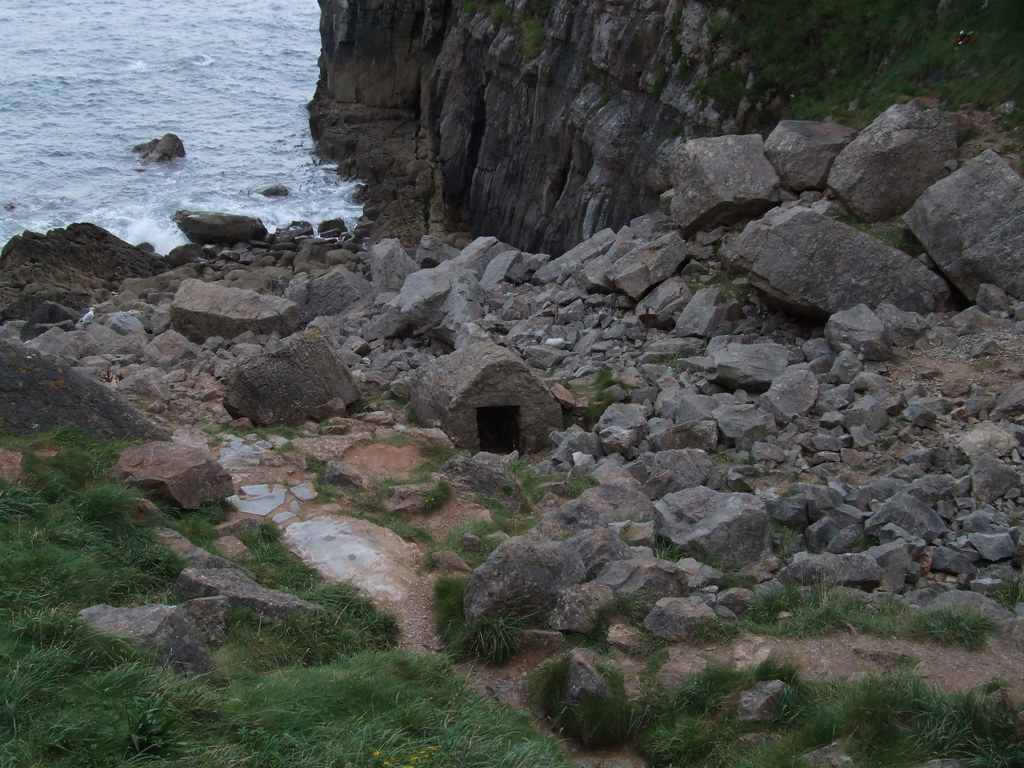
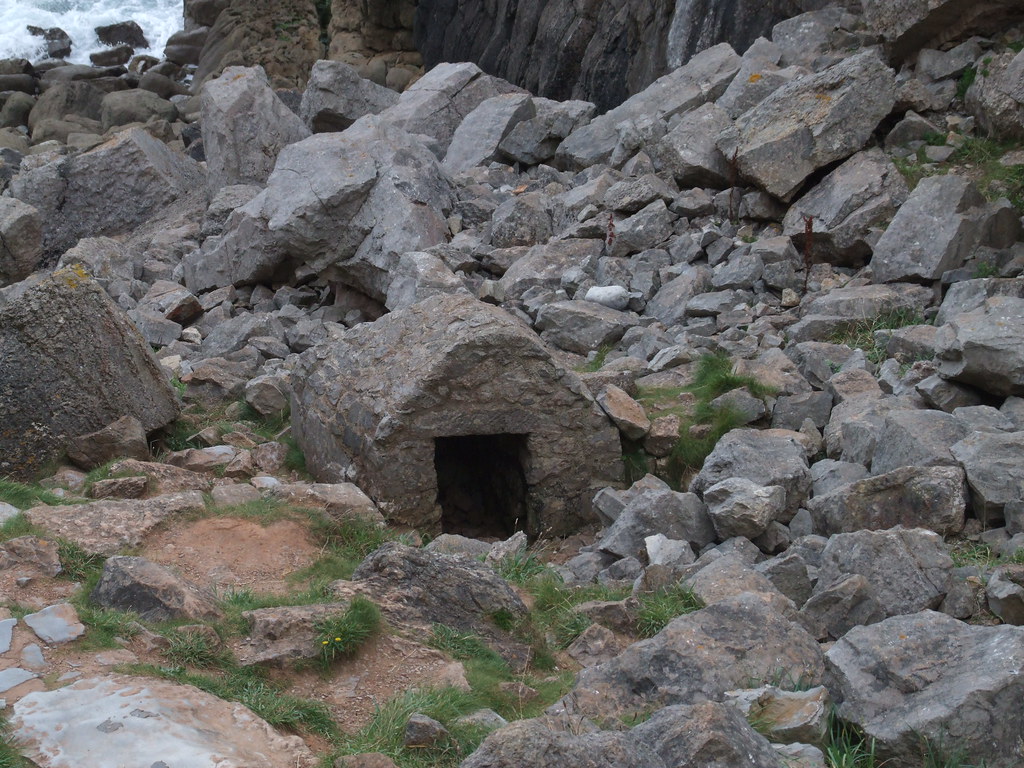
Royal Visit
In August 1902 the Chapel was visited by King Edward VII and Queen Alexandra, who expressed their delight at all that they saw.
Here`s my pics.....
From the beach side...
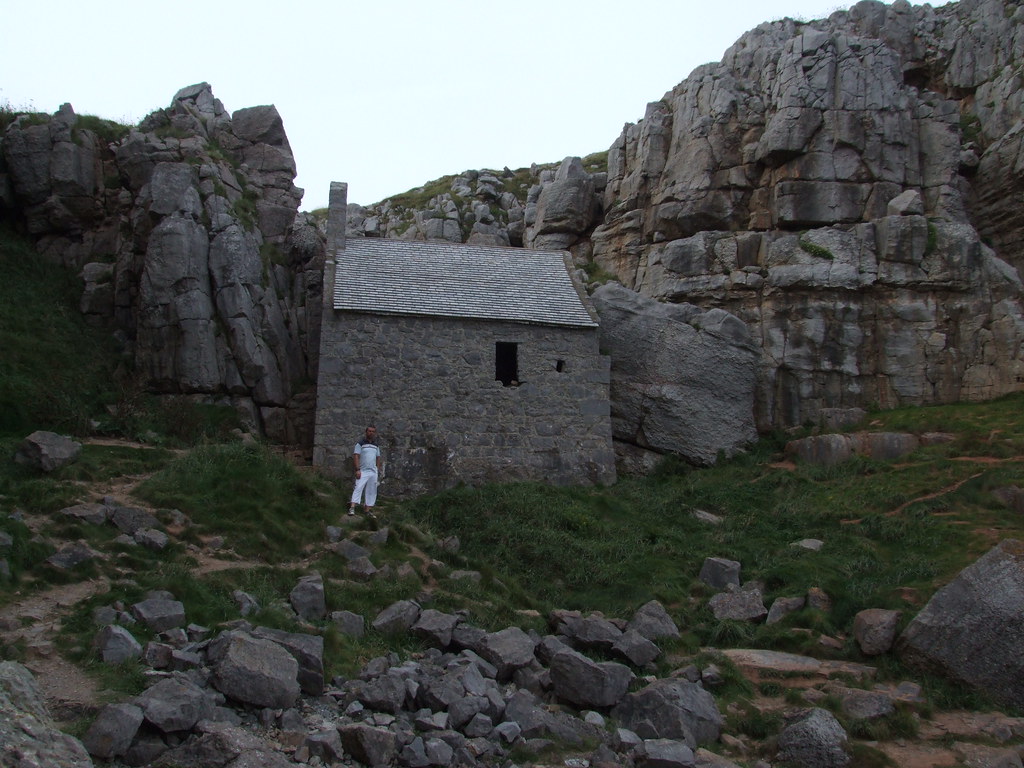
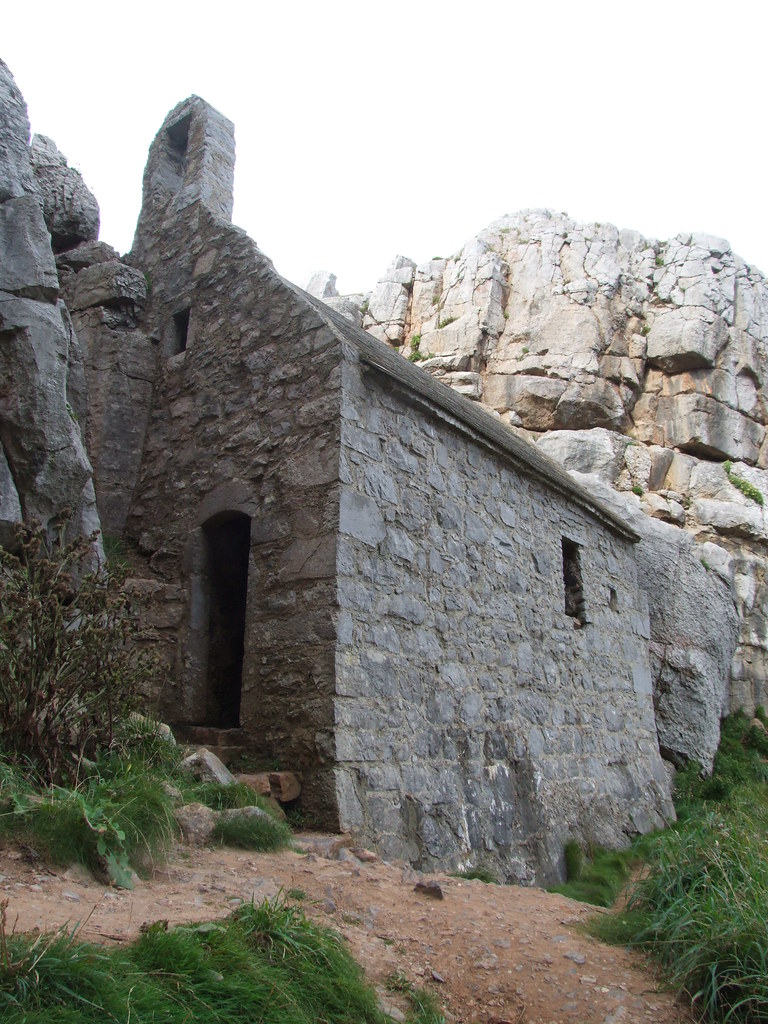
And inside...
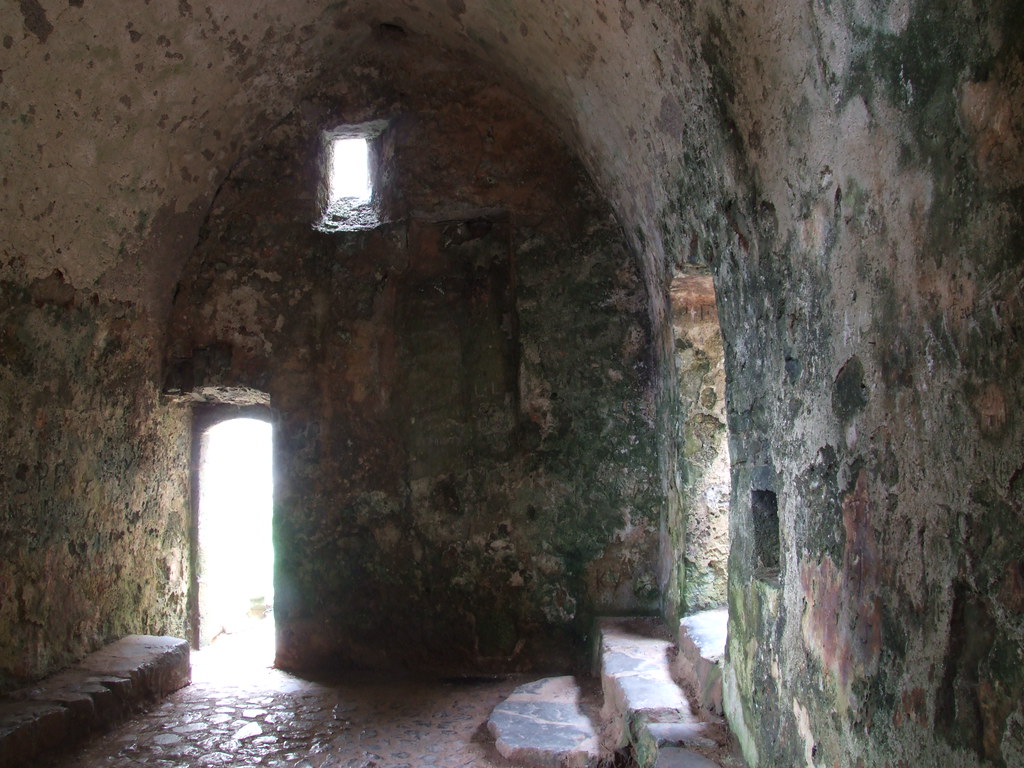


Outside views...

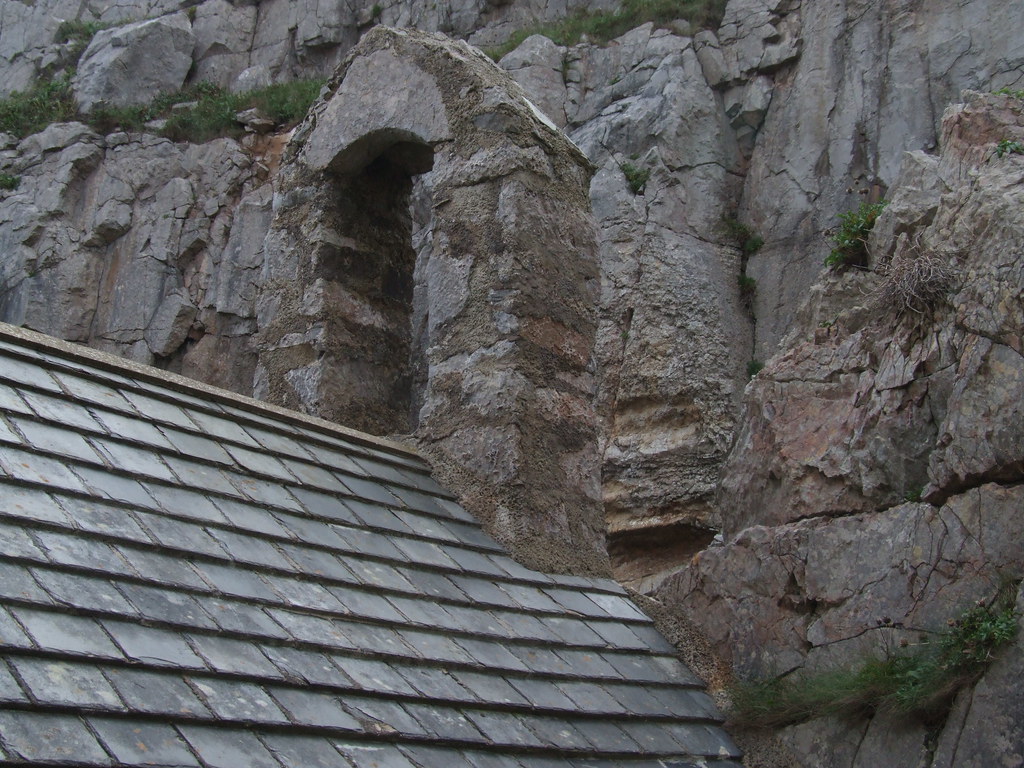
I walked waaaayyy too far to get here but it was well worth it....
OS Reference: SR967929
Listed: Grade I
Scheduled Ancient Monument
Pembrokeshire Coast National Park
Although falling within the ancient parish of Bosherston the Chapel
is in the care of Pembrokeshire Coast National Park.
Access to the cliff-top path leading down to the chapel
is dependent upon the Firing Range being open to the public.

LOCAL NOTICES MUST BE OBSERVED.Right out on the cliffs of the spectacular Pembrokeshire National Park, five miles or so south of Pembroke, and a mile beyond the village of Bosherston, with its fine old 13th century church, and the famous lily ponds, there is one of the most picturesque little 6th century hermits' chapels in Britain. It is named after the hermit and saint who lived there so many centuries ago, St Govan.
Naturally, after such a long time, what we know of him is encrusted with legend, and it is now no longer possible to distinguish simple fact from pious embroidery, even if we wanted to. But here is what we know or what we are told about St Govan and his chapel.
St Govan, the man
St Govan was born of the Hy Cinnselach clan who lived in County Wexford in Ireland. His proper name was Gobhan or Gobban, which means a smith; of Gobanniuere, the old name for Abergavenny, meaning a smithy. Possibly St Govan's father was a worker in wood or metal.
As a boy St Govan was attracted by the preaching and teaching of St Ailbe, a native of Solva, Pembrokeshire, who founded the monastery of Dairinis, in Wexford, and Govan joined the monastery there. It is said that he worked as a cook for the community of the followers of St Ailbe.
St Ailbe desired to have a correct form of the Mass, and sent Lugich, Cailcean and Govan to Rome. Also, we are told that for a short time, probably after St Ailbe's death in 527, Govan was a disciple of St Senan at the monastery of Inniscathy. Then Govan returned to the monastery of Dairinis, where he was elected Abbot.
Why did he come to Pembrokeshire? He may have come to visit a Welsh Abbot. He may have come to seek descendents of his beloved teacher, who had come from Solva. He may have been preparing a geographical survey, tracing the coastline of Wales at that point which is nearest to Wexford. Or, like a modern tourist, he may have come to see the beautiful countryside now contained in the Pembrokeshire National Park! St Govan was already an elderly man when he came to Pembrokeshire, and tradition says that pirates from Lundy Island tried to capture him. This is interesting and feasible, for he would have been dressed as an Abbot. His capture therefore could have resulted in a large ransom being demanded from the monastery, the wealthy house of the day.
The tradition goes on to say that the cleft in the rock at St Govan's Chapel opened miraculously for Govan to hide in, closed over him, opening miraculously for a second time after the pirates had gone away.
If St Govan was chased he probably found the fissure a safe hiding place. As he saw the pirates leaving he was filled with a sense of shame at his cowardice,
and decided to remain so that in future hemight convert the pirates. Or possibly he was aware that the local people were much troubled by the marauding pirates and he decided to remain as a watchman, teacher and protector for them.
What we do know is that St Govan apparently stayed for the rest of his life in his cell, worshipping, preaching and teaching here in South Pembrokeshire. His saintliness was marked by the Church, which designated March 26th as St Govan's Day, and by followers who built the Chapel in the Cliffs. Tradition says that St Govan lies buried under the altar in the chapel which bears his name. He died in 586.
The Chapel
To enter this picturesque little building it is necessary to descend a long flight of steps, which, legend asserts, cannot be accurately counted by a mortal being.

It is very strange that when a group of people are told to count the steps their answers always vary. It may have something to do with the fact that the steps are most irregular, with many half steps. Depending on where a person places his foot the count could vary considerably. The number of steps is approximately 74. The Chapel is simply constructed, having just a nave (main body) which measures approximately 5.3m by 3.8m.
At the east end is a stone altar, and steps leading to the small cell formed in the rock. The south wall contains a piscina, a small aperture and the main window. The north wall is plain, except for the entrance and a small recess or shelf. The west wall has a circle in the rough plastering high up and to the right of centre.

Within the circle there was an inscription, but all that is now visible are what look like a 6 and a O. Experts say that these are the only genuinely original marks on the walls. There are sadly a number of modern graffiti marks now. The west wall also has a small window and a doorway leading out to the rocks below and to a roughly built well. Experts agree that the building is at least as old as the 11th century and may well be as old as the 6th century

The Cell
Inside the cell there is a fissure in the rock, and the sides of the fissure show rib like characteristics. Legend says they are the imprints of St Govan's body as he lay hidden there. Another legend says that if a person makes a wish and enters the fissure, and is able to turn himself around, his wish will be granted.
The Bell Rock
Outside the Chapel there is a large rock boulder known as the Bell Rock. The legend is that St Govan was given a silver bell which was stolen by pirates from its bell tower. St Govan prayed for its return, and angels retrieved it and placed it inside a rock where it would be safe, and St Govan used to tap the rock which gave a note a thousand times stronger than the note of the original bell.
The Wishing and Healing Wells
In the floor near the main entrance there used to be a well, the water from which could only be procured in a limpet shell or small spoon, drop by drop. It was said to be a cure for eye complaints, skin diseases, and rheumatic tendencies.
The rough built well outside the Chapel (which is also dry now) has a double legend of being a wishing well and a healing well.


Royal Visit
In August 1902 the Chapel was visited by King Edward VII and Queen Alexandra, who expressed their delight at all that they saw.
Here`s my pics.....
From the beach side...


And inside...



Outside views...


I walked waaaayyy too far to get here but it was well worth it....




